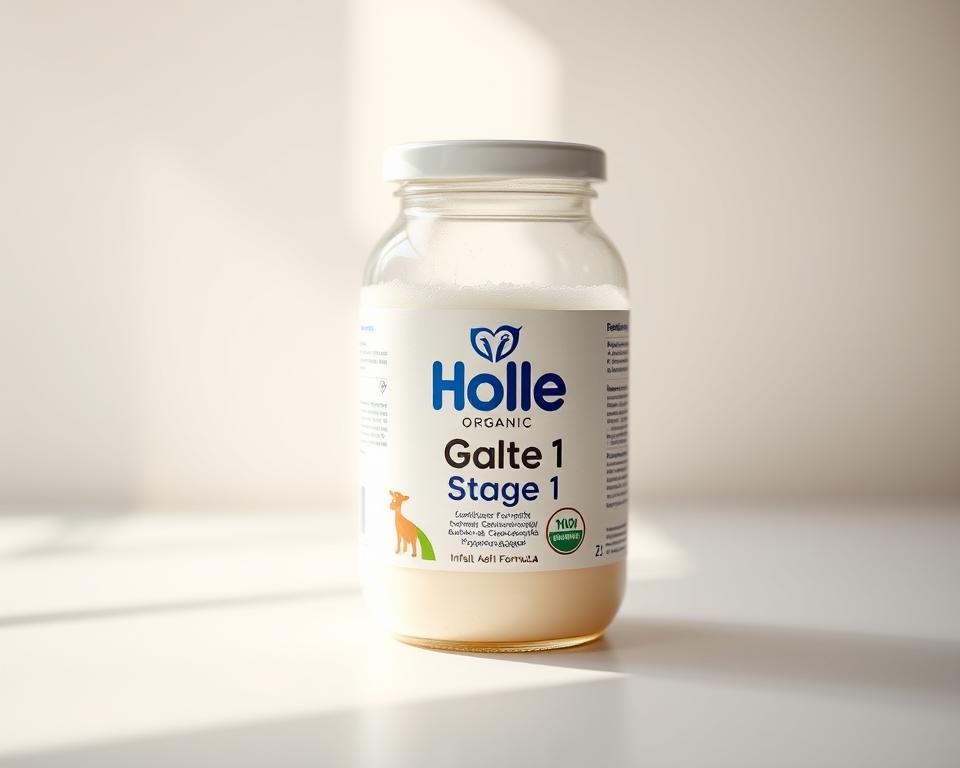Revealing the Comprehensive Roadmap to Strippers Pre-Wedding Party Across Austin
Eager to find out why securing strippers for your stag party in Austin could be the most remarkable choice you make? Austin’s dynamic nightlife and wide-ranging grown-up amusements render it the top-tier destination for celebrating the groom-to-be. Our tutorial will outline everything you require to know for a remarkable experience. Whether you’re booking skilled strippers to choosing the ideal venues, we cover every angle.
Austin is not just renowned for its breathtaking beaches; the city also sports an astonishing variety of acts and strippers Austin. You can find Asian, Black, Latin, and LGBT strippers available to match your tastes. Regardless if it’s an low-key gathering at a private venue or a extravagant night out, the choices for strippers bachelor party Austin are practically boundless.
Join us as we explore this exciting city that transforms each detail into celebration gold. We guarantee your bachelor party is not only entertaining but also a distinct experience crafted to your group’s wishes.
Key Points That Pick Austin for Your Bachelor Party?
Austin is a leading choice for a strippers bachelor party Austin. It boasts a vibrant atmosphere, beautiful beaches, and a host of advantages. The city supplies a range of venues, from elite gentlemen’s clubs Austin to easygoing beachside spots. This renders it the perfect place to mark before the wedding.
The Vibrant Party Scene
Austin’s nightlife is truly spectacular. It highlights a selection of gentlemen’s clubs Austin and distinct entertainment, including entrancing burlesque shows like the Famed Ooh La La Revue. The Gaslamp Quarter is brimming with numerous clubs and bars, delivering ready approach to varied entertainment options for all wallets and preferences.
Picturesque Beaches and Venues
Austin is home to around 70 miles of spectacular coastline, prime for countless adventures. Whether you’re relaxing on Coronado Beach or savoring a bonfire at Ocean Beach, the vistas are breathtaking. Beach venues deliver the picturesque setting for remarkable gatherings, bringing to the excitement of a strippers bachelor party Austin.
Ease of Access and Accommodation
Austin’s convenience is another highlight to choose it for your celebration. The city brings a large selection of accommodations, from deluxe hotels to snug rentals. This guarantees your group has all necessities for a smooth experience. With costs ranging from $1,500 to $3,000, planning can align with different wallets while guaranteeing maximum fun. Booking exotic dancers Austin introduces a signature flair to your party, found all over town.
What Awaits from Stripper Entertainment
Booking stripper entertainment for your bachelor party in Austin reveals a universe of excitement. Guests will experience a energetic atmosphere with performances fine-tuned to diverse tastes. This blend of prowess, excitement, and professionalism turns the event unforgettable.

Types of Performances Available
In Austin, the selection of bachelor party strippers is remarkable:
- Male and female performers
- Solo acts spotlighting individual talent
- Group routines for grand parties
- Drag shows, like the famed Diva Royale
- Burlesque performances, such as those at the renowned Red Velvet show
Personalization Features
Austin’s adult entertainment scene offers customization. Agencies let you tailor performances to your liking. You can pick:
- Outfit themes like police officer, fireman, or construction worker
- Performance styles that align with your party’s vibe
- Songs that appeal to your group
Standards of Conduct
Professionalism is key in stripper entertainment. Performers maintain a respectful setting and follow safety rules. Agencies review their entertainers, verifying they’re trained and experienced. They also encourage early bookings to lock in top talent, guaranteeing a memorable event for those 21 and older.
Planning the Ideal Bachelor Party
Putting together a remarkable bachelor party requires thorough planning of several factors. Allocating funds provides your cornerstone, enabling a breakdown of expenses like accommodations, entertainment, and food. Recognizing what everyone expects helps create a cohesive experience, which is vital when coordinating with friends. The calendar counts; booking the event with everyone’s availability in mind can significantly improve the overall enjoyment.
Setting a Budget
Creating a budget ahead of time offers clarity on what is achievable. Typical bachelor parties last between 2-3 days, yet some may go longer to a week based on available funds. Include expenses for accommodation and entertainment while building some flexibility for unplanned costs. Outlining a financial range secures excitement without overspending.
Group Coordination
Smooth collaboration makes sure the planning process simpler. Loop in your friends to assess their preferences for strippers bachelor party Austin and adult entertainment Austin possibilities. It often is smoothest when the organizer or the groom’s close friends manage details of organizing details and managing costs. Confirm each participant is clear on their contributions, whether that involves covering certain services or bringing fun gifts.
Timing and Scheduling
Locking in the ideal timing for the bachelor party can be critical. Certain dates may work better than others, ensuring everyone’s schedules align. Double-check availability with all attendees to avoid conflicts. Booking services like bikini bartenders or pool party girls should be done in advance to secure your preferred choices. Planning around major events can heighten excitement but may require early reservations.
Top Spots for a Strippers Bachelor Party
Austin is a mecca for bachelor parties, with a host of venues to decide from. Guests can pick high-octane nightclubs for electrifying performances, intimate rentals for a customized event, or distinct outdoor spaces to enjoy the Southern California weather. Each spot is key in establishing the tone for a night brimming with fun and adult entertainment Austin is celebrated for.
Dance Floors & Lounges
Austin’s nightlife is peerless, with many haunts for bachelor parties. Places like NOVA SD and Parq Nightclub serve up unforgettable experiences. Guests can partake of top-notch entertainment and refreshing drinks, making for an unforgettable night.
Tailored Locations
Private event rentals allow for a personalized experience for parties with strippers. From luxurious villas to cozy settings, these spaces can be shaped to match any need. Hosting strippers in a private venue adds a personal touch, improving the night’s enjoyment.
Al Fresco Spots
Austin’s natural splendor makes it prime for outdoor bachelor party venues. Options like party pontoons or beach parties introduce a unique touch to adult entertainment Austin style. These venues grant a chance to rejoice under the stars or by the waves, adding a inviting twist to the festivities.
What to Know Before Booking
Arranging a bachelor party demands the best strippers for an remarkable night. Choosing a dependable agency guarantees you get the best performers. Austin offers a variety of exotic dancers. Understanding what to look for supports make a smart choice.
Choosing the Right Agency
Identifying a reputable agency is essential for a great event. Hunt for one with a stellar name and high-quality performers. Reviews from former patrons provide insightful insights into the agency’s professionalism and service.
Reading Reviews and Testimonials
Client feedback is critical in deciding. Reviews provide a glimpse into what others have experienced. Hunt for testimonials that highlight professionalism and performer quality to exceed your expectations.
Validity Checks
It’s necessary to ensure the agency is legitimate to avoid scams and negative experiences. Verify licenses or permits that show they follow legal and safety standards. The cleanliness and hygiene of performers also reflect the agency’s professionalism.
Cranking Up the Thrills to Your Celebration
Improving the fun at a bachelor party can lead to unforgettable memories. Embracing themed parties injects a level of creativity that can convert an ordinary gathering into something fantastic. Costumes and decorations that fit your theme can create a cohesive experience. Branching on entertainment options by including live music or interactive games can boost the atmosphere, making it an engaging and lively event. Catering and food services fulfill a vital role in keeping guests satisfied throughout the occasion, supporting an unforgettable bachelorette party Austin experience.
Themed Parties and Costumes
Themed parties create an excellent canvas for creativity. Explore options that reflect the groom’s personality or interests. Themes can cover everything from vintage Hollywood flair to beach parties, letting guests to dress up. Costumes inspire conversation and excitement, launching a festive tone for the celebration.
Other Entertainment Options
Adding various entertainment options can bolster the overall experience at your party. Games, live performances, or even interactive activities bring a significant difference. Book a package with gentlemen’s clubs Austin for live entertainment or arrange for mobile entertainers to join your gathering. The infusion of these elements not only improves the event but sustains the energy up.
Catering and Food Services
Tasty fare is vital for a memorable party. Hiring catering services guarantees guests are well-fed, allowing everyone to focus on enjoying the festivities. From appetizers to full-course meals, the proper catering can bolster the atmosphere and build a festive dining experience. Look into local gourmet options around Austin that can deliver an extra touch to your bachelorette party Austin.
Staying Compliant for Stripper Services
It’s vital to grasp the legal aspects of stripper services for a stress-free bachelor party. Strippers in Austin must observe certain rules to secure a safe and enjoyable experience. Knowing these legal guidelines is critical to a flawless event.
Age Limits
Age rules are vital when planning events with strippers, like in Austin where participants are required to be 21 or older. This rule ensures the atmosphere appropriate and verifies all activities are appropriate for adults.
Permits and Licenses
Securing the necessary permits and licenses is vital for strip clubs in Austin. Both agencies and entertainers need these documents to perform legally. The type of permit required can vary, linked to whether the event is private or public. This underscores the importance of following the law.
Event Types
Grasping the contrast between public and private performances is important. Public events have stricter rules, while private parties are often more laid back. This knowledge supports in planning your bachelor party within legal boundaries.
Group Preparation for the Event
Setting up for an remarkable bachelor party in Austin demands meticulous coordination and open communication. Clear communication is key to setting expectations for behavior and participation. As you prepare for the adult entertainment in Austin, ensure everyone is briefed and included.
Group Dialogue
Pre-event, a crew meeting is vital to define expectations for the bachelor party strippers Austin experience. Transparent discussion lets everyone to express their preferences and concerns, creating a unified atmosphere. Highlighting decorum ensures all guests remain at ease throughout the celebration.
Behavior Guidelines
Ground rules are vital to enhance the experience for all. Address what is acceptable behavior with the performers and among group members. It’s critical to underline respecting boundaries at all times. Detailing these rules can prevent misunderstandings and foster a fun atmosphere.
Courtesy & Accountability
Fostering a culture of respect and responsibility is vital for a stellar bachelor party. Tell attendees that the goal is to have a wonderful time without crossing personal boundaries. Promote a positive environment where all guests can savor the adult entertainment Austin offers while respecting the performers.
Drinking Dynamics in Your Bachelor Party
Alcohol is commonly at the center of bachelor parties, bringing to the celebratory vibe. Opting for the right drinks can define the event unforgettable for everyone. It’s crucial to consider the tastes of all guests.
What to Pour
Go with a variety of time-honored and trendy drinks that please the groom and his friends. Some top picks include:
- Cocktails like margaritas and mojitos
- Craft beers and local brews
- Wine for those who enjoy a milder drink
Offering a range secures everyone has something they like, boosting fun levels for all.
Safety First
It’s vital to keep the party secure and fun. Encouraging responsible drinking prevents regrets. Here are some tips:
- Limit the number of drinks each person can have
- Provide non-alcoholic options for those who want to drink less
- Arrange for safe transportation, like when checking out gentlemen’s clubs in Austin
By prioritizing responsible drinking, you can sustain the party atmosphere upbeat and easy for everyone.
Matching Libations to Fun
Combining drinks with entertainment can boost the bachelor party experience. Try making themed cocktails that align with the evening’s activities. For instance, special drinks during a private show can intensify the atmosphere. This creates a cohesive and unforgettable experience, turning the night even more enjoyable.
Getting the Best From Your Bachelor Party
Maximizing the enjoyment of your bachelor party requires careful planning and attention to detail. Capturing moments through photography and video can yield lasting memories. These memories capture the essence of the event. An energetic after-party can stretch the celebration, securing continued fun after the main event ends. Creative gestures and souvenirs provide reminders of the unforgettable night shared with friends and family.
Memories on Film
Bringing in a professional photographer or videographer can improve your bachelorette party Austin experience. These experts document the vibe of the night candidly. This guarantees you have high-quality memories to cherish. Ask friends to take candid shots or produce a group video to record the experience.
Late-Night Plans
Look into transitioning to a dynamic nightclub or meeting at a private residence to keep the festivities going. The Gaslamp Quarter is the epicenter of Austin’s nightlife, with venues for all tastes. Booking a party bus infuses panache and fun, guaranteeing safe transportation to the next destination.
Parting Memories
Crafting memorable memories can incorporate small keepsakes. Guests might love personalized gifts such as shot glasses, custom t-shirts, or fun party games. Souvenirs highlighting unforgettable moments carry the night’s spirit alive for all. Including an adult entertainment Austin flair with themed decorations or props raises the evening’s lively activities.
Testimonials: Memorable Bachelor Party Experiences
First-hand accounts from Austin bachelor parties give valuable insights for future planners. Many have recounted their experiences with exotic dancers in Austin. They underline how these performances brought unmatched excitement and fun to their events. With groups running from 7 to 10, the atmosphere evolved these celebrations into unforgettable nights.
Takeaways from these gatherings point out the need for early planning, focusing on entertainment. Attendees suggest considering the type of stripper entertainment and the venue’s atmosphere. These stories reveal that preparation is crucial to sidestepping common issues and securing a memorable experience for all.
The addition of stripper entertainment can turn an ordinary party into an incredible one. It infuses laughter and long-term joy. Participants often say that the entertainment, provided by professional dancers, creates the most memorable moments. This renders it vital for planning a bachelor party in Austin.









